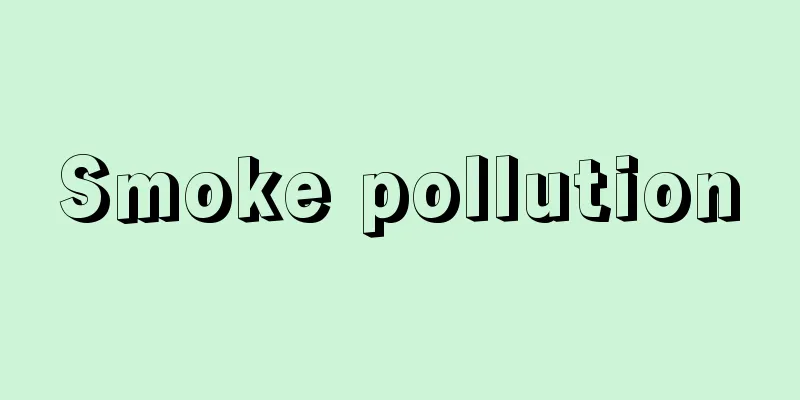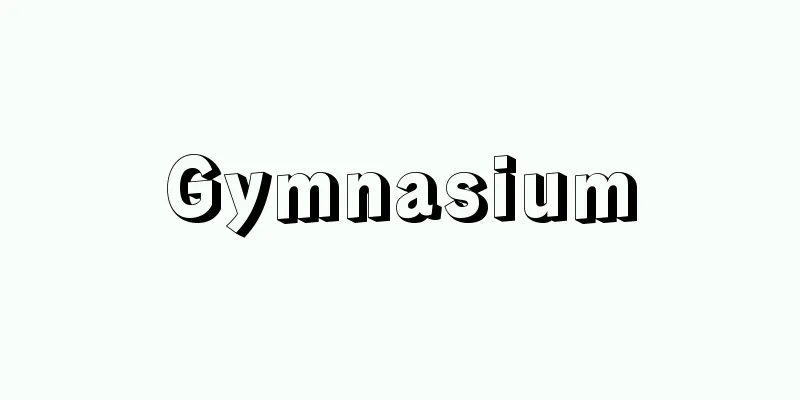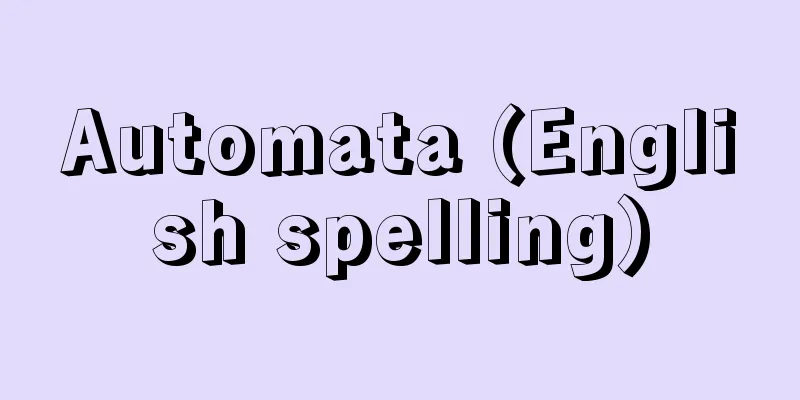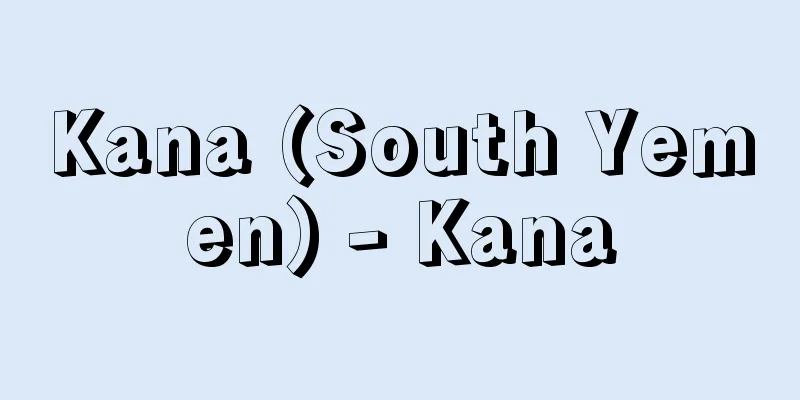Smoke pollution

|
Disasters caused by gases and smoke. In the past, it referred to damage to crops, forest trees, and fruit trees caused by sulfur oxides, especially sulfur dioxide (sulfurous acid gas), contained in exhaust smoke from smelters and other plants. However, due to the serious effects on human health and other aspects of humans caused by the London smog of 1952 and the photochemical smog of Los Angeles in 1948, smoke damage came to be considered a type of air pollution damage. In Japan, too, with the dramatic increase in the scale of industrial production since around 1950, air pollution caused by sulfur oxides and nitrogen oxides has begun to have a major impact on human health, animals, plants, and agricultural crops. The damage is not only primary pollution caused directly by exhaust emissions, but also secondary pollution caused by sulfur oxides, such as sulfuric acid mist and acid rain, and nitrogen oxides, such as photochemical smog caused by the effects of sunlight and temperature, which have become major problems. Sulfur oxides have been decreasing due to various regulatory measures for factories, but nitrogen oxides are still increasing, especially around roads in large cities. Transboundary pollution occurs when pollutants cross borders to areas far from their source, and often occurs via the atmosphere. In Japan, which is surrounded by the sea, transboundary pollution has not been a big problem until now, but in recent years, the large amounts of air pollutants that have been generated due to the remarkable economic development of South Korea and China have been carried by the westerly winds, and transboundary pollution is becoming a problem. [Takao Ando and Yoh Narumura] "A History of the Anti-Pollution Movement in Modern Japan" by Shimizu Miyuki (1995, Nihon Keizai Hyoronsha)" ▽ "An Introduction to Environmental Studies" by Okamoto Shinichi, Ichikawa Yoichi, and Nagasawa Shinya (1996, Sangyo Tosho)" ▽ "Chemical Engineering for Clean Air" by Sadakata Masatake (1999, Baifukan)" ▽ "Japanese Environmental History in the 20th Century" edited by Ishii Kuniyoshi and compiled by the Japan Environmental Management Association for Industry (2002, Maruzen) [Reference items] | | | | | | | | |Source: Shogakukan Encyclopedia Nipponica About Encyclopedia Nipponica Information | Legend |
|
ガスや煙などによる災害。以前は製錬所などの排煙中に含まれる硫黄(いおう)酸化物、とくに二酸化硫黄(亜硫酸ガス)による農作物や林木あるいは果樹などの被害をさした。しかし、1952年のロンドンのスモッグ、そして1948年のロサンゼルスの光化学スモッグなどによる人体の健康その他、人間への深刻な影響により、煙害は大気汚染害の一つとみなされるようになった。 日本でも1950年(昭和25)ころより工業生産の規模の飛躍的な増大に伴い、硫黄酸化物や窒素酸化物による大気汚染害が、人体の健康や動植物や農作物に大きな影響を与えるようになった。その被害は、排気物直接による一次汚染はもちろん、硫黄酸化物では硫酸ミスト(もや)や酸性雨、窒素酸化物では日射や気温の影響によって発生する光化学スモッグなどをもたらすことによる二次汚染も、大きな問題となっている。硫黄酸化物は、工場などに対する各種の規制措置により減少しているが、窒素酸化物は、大都市の道路周辺を中心に依然として増大している。 汚染物質が国境を越えて発生源から遠く離れた地域まで運ばれることを越境汚染といい、大気経由で汚染物質が運ばれることが多い。海に囲まれた日本では、これまで越境汚染はあまり問題とならなかったが、近年、韓国や中国のめざましい経済発達に伴って発生した多量の大気汚染物質が、偏西風などに乗って運ばれる越境汚染が問題になりつつある。 [安藤隆夫・饒村 曜] 『清水みゆき著『近代日本の反公害運動史論』(1995・日本経済評論社)』▽『岡本真一・市川陽一・長沢伸也著『環境学概論』(1996・産業図書)』▽『定方正毅著『大気クリーン化のための化学工学』(1999・培風館)』▽『石井邦宜監修、産業環境管理協会編『20世紀の日本環境史』(2002・丸善)』 [参照項目] | | | | | | | | |出典 小学館 日本大百科全書(ニッポニカ)日本大百科全書(ニッポニカ)について 情報 | 凡例 |
<<: Coastal area - Enkaiikuiki
Recommend
rosace
…There are various variations, such as the spiral...
Napata (English spelling)
The capital of the Nubian Kingdom of Kush (c. 750-...
Hui-guan (English spelling)
A scholar monk under Kumarajiva during the Norther...
Windbreak - Windbreak
This is the simplest style of dwelling found among...
《Théâtre d'agriculture et mesnage des champs》 (English notation)
…In 1598, he was invited by Henry IV to Paris, wh...
Rockery
…Originally from Europe, it was invented to plant...
Border flower bed
...(3) Water-planted flower beds: Flower beds tha...
Gas suicide - gasujisatsu
...When someone dies in the mountains or elsewher...
Bolesław Chrobry (English spelling)
(We should imagine a complex intertwining of neig...
Complete Merchant - Kanzen Shonin
…(3) A civil company whose business purpose is no...
Barometric altimeter calibration value - Barometric altimeter calibration value
...The indicator is the height of the cloud base ...
Korean Theatre
Korean theatre can be broadly divided into tradit...
Awakening in the middle of the night - Yowanonezame
A full-length story from the late Heian period. It...
Hyblaea puera (English spelling) Hyblaea puera
…[Shigeo Sugi]. … *Some of the terminology that m...
Narcissus jonquilla (English spelling)
…[Hiroshi Aramata]. … *Some of the terminology th...









